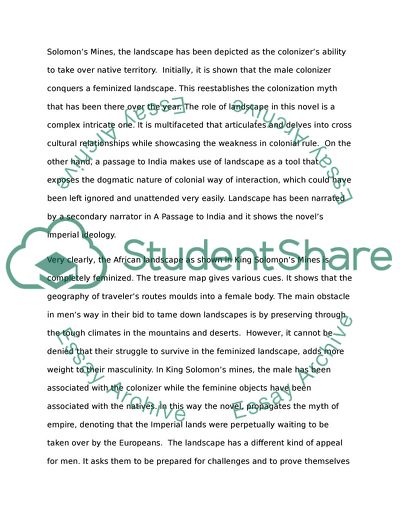Cite this document
(The Representation of Landscape in King Solomon's Mines Report, n.d.)
The Representation of Landscape in King Solomon's Mines Report. https://studentshare.org/literature/1741783-the-representation-of-landscape-in-king-solomons-mineshaggard-oxford-worlds-classics-2008
The Representation of Landscape in King Solomon's Mines Report. https://studentshare.org/literature/1741783-the-representation-of-landscape-in-king-solomons-mineshaggard-oxford-worlds-classics-2008
(The Representation of Landscape in King Solomon'S Mines Report)
The Representation of Landscape in King Solomon'S Mines Report. https://studentshare.org/literature/1741783-the-representation-of-landscape-in-king-solomons-mineshaggard-oxford-worlds-classics-2008.
The Representation of Landscape in King Solomon'S Mines Report. https://studentshare.org/literature/1741783-the-representation-of-landscape-in-king-solomons-mineshaggard-oxford-worlds-classics-2008.
“The Representation of Landscape in King Solomon'S Mines Report”. https://studentshare.org/literature/1741783-the-representation-of-landscape-in-king-solomons-mineshaggard-oxford-worlds-classics-2008.


